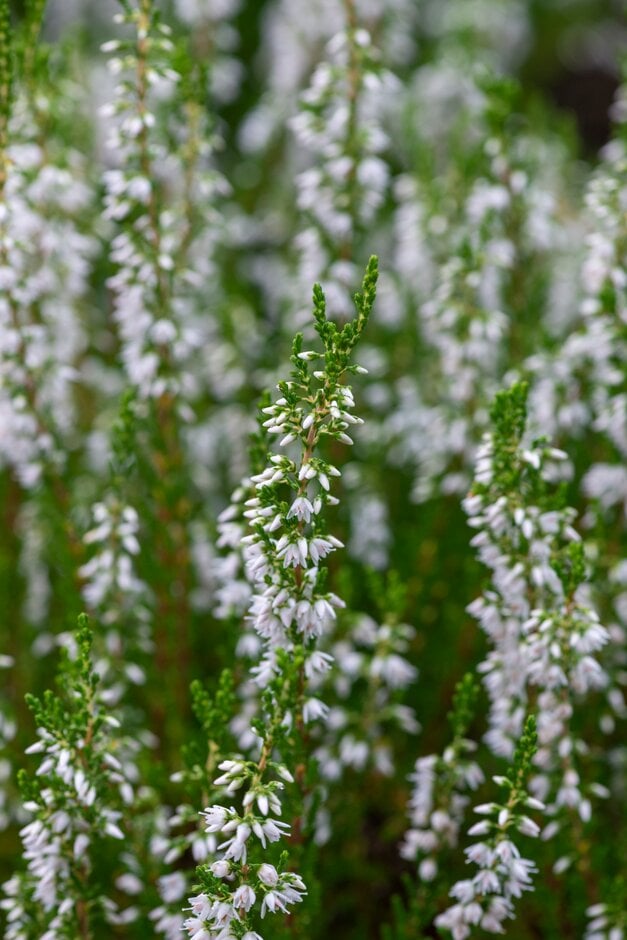Size
Ultimate height
0.5–1 metresTime to ultimate height
2–5 yearsUltimate spread
0.1–0.5 metresGrowing conditions
Moisture
Moist but well–drained, Well–drainedpH
AcidColour & scent
| Stem | Flower | Foliage | Fruit | |
| Spring | Yellow | Green | ||
|---|---|---|---|---|
| Summer | White | Green | ||
| Autumn | White | Green | ||
| Winter | Green |
Position
- Full sun
Aspect
South–facing or West–facing or East–facing
Exposure
Exposed Hardiness
H7Botanical details
- Family
- Ericaceae
- Native to GB / Ireland
- No
- Foliage
- Evergreen
- Habit
- Bushy, Matforming, Spreading branched
- Genus
Calluna are low-growing or dwarf evergreen shrubs with stems clothed in tiny overlapping leaves, and terminal, spike-like racemes of small, 4-petalled flowers with coloured calyces
- Name status
Accepted
How to grow
Cultivation
Grow in well-drained acidic soil in full sun
Propagation
Sow seed in spring. Propagate by division, layering shoots in spring/summer or planting softwood cuttings in a cold frame in summer.
Suggested planting locations and garden types
- Coastal
- Patio and container plants
- Rock garden
- Wildlife gardens
- Banks and slopes
- Flower borders and beds
Pruning
Trim off old flowering stems in october after flowering to keep compact and for best spring tip colour. Pruning group 10.
Pests
Generally pest-free
Diseases
May be susceptible to honey fungus (rarely) and other fungal diseases
Get involved
The Royal Horticultural Society is the UK’s leading gardening charity. We aim to enrich everyone’s life through plants, and make the UK a greener and more beautiful place.
